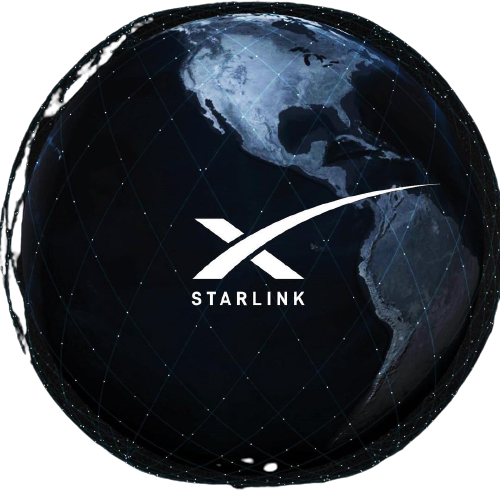Starlink: The Next Frontier in Digital Transformation
 Emmanuel Rono
Emmanuel Rono
Introduction
In an era where digital transformation is reshaping industries and daily life, a new frontier is emerging from the skies, promising to bridge the digital divide on a global scale: Starlink. Launched by SpaceX, Elon Musk's aerospace manufacturer and space transport services company, Starlink aims to create a satellite internet constellation to provide high-speed, low-latency internet everywhere on the planet. But how does Starlink factor into the broader digital transformation journey? Let's delve in.
The Vision Behind Starlink
The central mission of Starlink is to democratize internet access. With vast areas of the globe still without reliable internet, Starlink's vision is to ensure everyone, from rural villages in Africa to remote locations in the Arctic, can access the digital world.
How Starlink Works
Satellite Constellation: Starlink's plan involves launching thousands of small satellites into low Earth orbit (LEO). These satellites form a network that works in tandem to deliver satellite internet to ground-based terminals.
Ground-Based Terminals: Users receive a Starlink kit, which includes a satellite dish and a router. This phased-array dish communicates with the satellite constellation to deliver internet access.
Steps
Here are the key steps involved in how Starlink works:
- The user's Starlink dish connects to a satellite in Low-Earth orbit.
- The satellite beams the user's data to a ground station on Earth.
- The ground station sends the user's data to the internet.
4. The user can then access the internet from their computer, phone, or other device
Starlink and Digital Transformation
Closing the Digital Divide: Starlink's most significant promise lies in its ability to provide internet in regions that have been historically underserved. This access can revolutionize education, healthcare, and business in these areas.
Enhancing Global Business: Real-time collaboration and cloud computing are pillars of modern business. Starlink can ensure businesses, regardless of location, can compete on the global stage.
Support for IoT and Emerging Tech: The Internet of Things (IoT) requires seamless connectivity. With Starlink, even remote devices, such as agricultural sensors or wildlife trackers, can be part of the IoT ecosystem.
Emergency Response: In disaster-stricken areas where infrastructure is damaged, Starlink can provide critical communication links, aiding in efficient disaster management and relief operations.
Challenges and Considerations
While Starlink presents vast opportunities, it's not without challenges:
Space Traffic: With thousands of satellites, concerns about space debris and satellite collisions increase.
Astronomical Observations: The brightness of Starlink satellites can interfere with astronomical observations. While SpaceX is working on solutions, this remains a contentious issue.
Regulatory Hurdles: For Starlink to operate in any country, it needs regulatory approval. This can be a complex process, especially in regions with established telecom providers.
The Road Ahead
Starlink represents a convergence of space technology and digital transformation, with the potential to redefine internet accessibility. As the project progresses, it will be essential to balance the tremendous benefits with environmental and regulatory concerns.
In conclusion, as digital transformation continues to shape the future, Starlink is a testament to humanity's drive to innovate, connect, and evolve. Through endeavors like this, we move a step closer to a truly interconnected world.
Starlink works by beaming internet data from satellites in low-Earth orbit to ground stations on Earth. The satellites are in a much lower orbit than traditional satellites, which means that they can provide much faster internet speeds and lower latency.
To connect to Starlink, users need a Starlink dish and a subscription to Starlink service. The dish is mounted on the user's roof or in their yard, and it communicates with the satellites in low-Earth orbit. The subscription provides the user with access to Starlink's network of satellites and ground stations.
Subscribe to my newsletter
Read articles from Emmanuel Rono directly inside your inbox. Subscribe to the newsletter, and don't miss out.
Written by

Emmanuel Rono
Emmanuel Rono
I am an Android developer specializing in Kotlin, I have crafted numerous user-centric applications with optimal performance. Passionate about continuous learning, I stay updated with the latest trends in the Android ecosystem, ensuring I deliver innovative and efficient apps. My expertise sets me apart in the community.